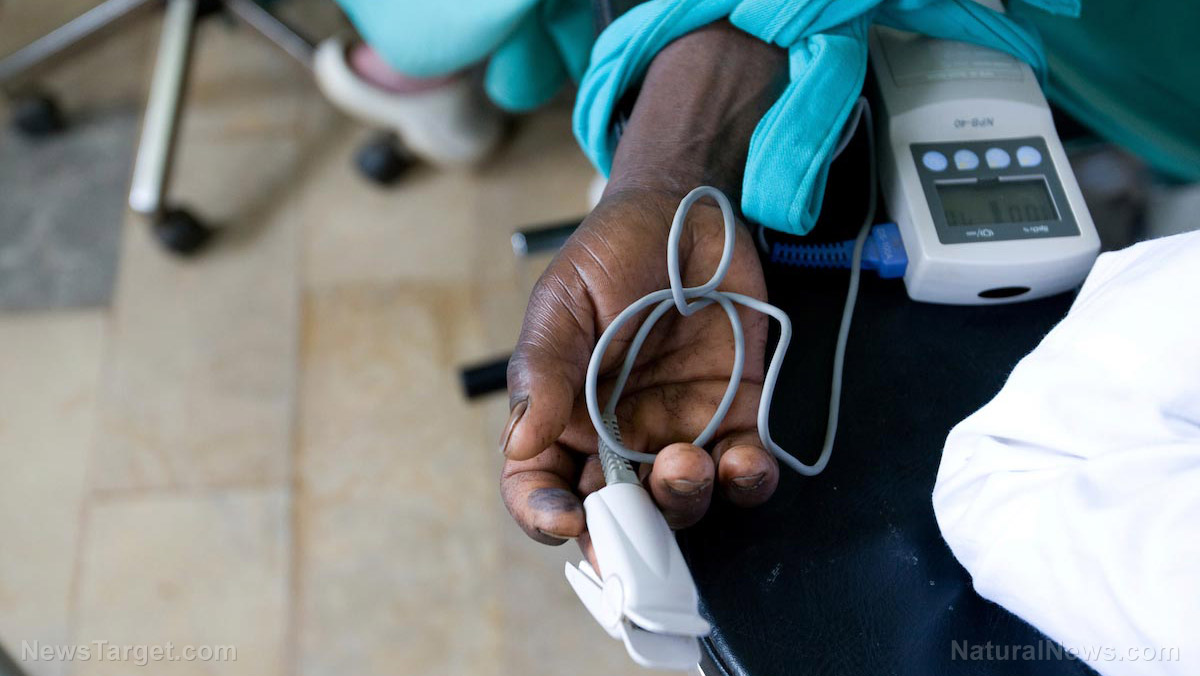Black Death and incurable Marburg Virus now spreading across Africa’s cities… world’s medical system helpless to stop it
11/07/2017 / By Cassie B.

Africa is currently contending with two serious disease outbreaks. The pneumonic plague has been making headlines as it sweeps across Madagascar, but there are concerns about it are being eclipsed by a far more sinister threat: A rare and fatal virus known Marburg virus disease (MVD), which has now broken out in Uganda.
The World Health Organization reports that five cases of MVD have already been identified, and emergency screenings are being carried out at the border between Kenya and Uganda after three people in the same Ugandan family succumbed to the disease.
What makes this situation so worrying is that MVD proves fatal in nine out of ten cases. The disease is clinically similar to Ebola, and the outbreak is believed to have started in September. A man who was reportedly in his 30s was admitted to a local health center complaining of a high fever, diarrhea and vomiting. He worked as a game hunter and resided near a cave containing a lot of Rousettus bats, which are natural hosts of the virus.
When antimalarial treatment did not help and the man’s condition continued to deteriorate, he was brought to another hospital, but he died soon after arriving. His sister passed away shortly after that, and a third victim died at a local health center. The sister might have contracted the virus through burial preparation rituals. Lab tests confirmed Marburg as the cause of their deaths. Another brother who showed symptoms and refused to go to the hospital has yet to be located.
Untreatable virus transmitted easily
The Marburg virus can be transmitted through direct contact with the bodily fluids, tissues or blood of people or wild animals infected with the disease – for example, it can be spread through bites from fruit bats and monkeys. In addition, contact with contaminated materials and surfaces like bedding and clothing could also spread the virus.

It is believed that several hundred people have already been exposed to this virus, and it is considered one of the most virulent pathogens that humans can be infected with. Early symptoms of the disease include chills, high fever, myalgia, and severe headache, and it has an incubation period of two to 21 days. The fatal cases typically entail bleeding from multiple areas.
Patients are said to appear “ghost-like” in appearance, with expressionless faces, deep-set eyes and drawn features. People are contagious for as long as their blood contains the virus. Because there is no treatment, medical interventions typically entail supportive care like that seen in Ebola cases. For example, fever control, IV fluids and electrolyte replacement can sometimes help. It is also believed that some of the experimental drugs used during the outbreak of Ebola in Western Africa could help this virus as well, so experimental antiviral therapies might be used in these cases.
MVD was first detected in Marburg, Germany, when workers who were exposed to the African green monkey in a lab experienced an outbreak in 1967. Fatality rates have ranged from 24 to 88 percent in the past depending on the viral strain and how well the outbreak is managed.
MVD first struck Uganda in 2007, when the virus hit the western district of Kamwenge. A 2012 outbreak was responsible for the deaths of 10 individuals, while one man died of the disease in 2014. The Kween district where the current outbreak is occurring has a total population of nearly 94,000 people. A third of those living there are illiterate, and only four percent of households can access electricity. The mountainous area’s rural nature makes it harder to get resources to it, but it can also help keep it from spreading as much as it might have otherwise.
One big hurdle is the superstitions among these people, who often believe that witchcraft is behind the deaths of their loved ones. They also view healthcare workers with suspicion, believing they kill people intentionally to spare others from disease, which means convincing them to go to the hospital can be quite difficult. This explains why one of the confirmed cases headed to Kenya to find traditional healers.
Plague outbreak in Madagascar reaches crisis point
Meanwhile, a plague outbreak in Madagascar has killed 127 people so far, reaching the crisis point after cases of the illnesses spiked by 37 percent over a period of just five days. That outbreak has been labeled the worst in half a century, and the pneumonic strain is deadlier than the traditional bubonic variety that typically strikes the country every year.
So far, there are more than 1,800 suspected cases, and experts believe this situation could get worse. If it continues to spread at its current rate, it could strike as many as 20,000 people in just a few weeks. It is spread easily through sneezing, coughing or spitting.
Warnings have been issued in nine African countries, including Mauritius, Kenya, South Africa, Tanzania, Mozambique, Comoros, Seychelles, Ethiopia, and Reunion. Schools and businesses are closed and public gatherings are canceled in Madagascar as the island nation tries to keep the death toll down.
Sources include:
Submit a correction >>
Tagged Under:
Africa, Ebola, infectious disease, Madagascar, Marburg virus, MVD, outbreak, pandemic, Plague, pneumonic plague, Uganda
This article may contain statements that reflect the opinion of the author





















